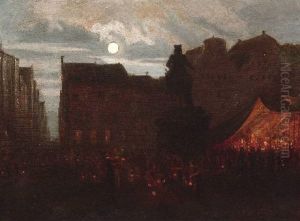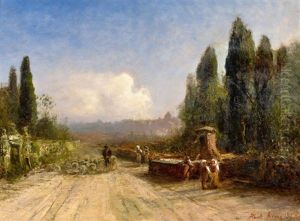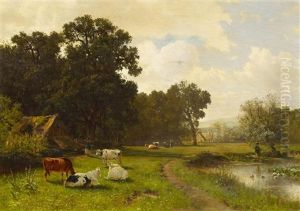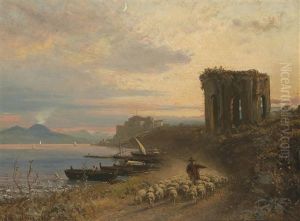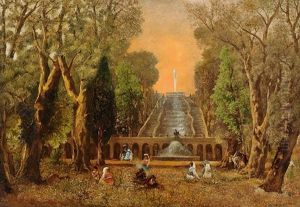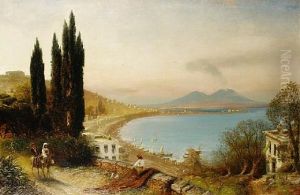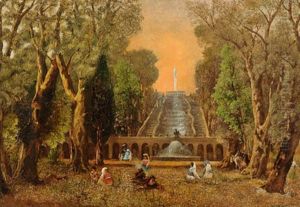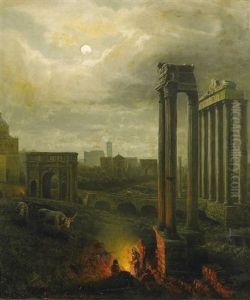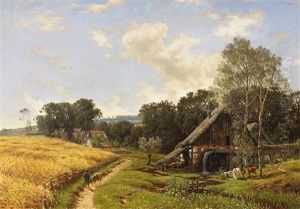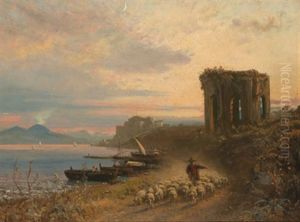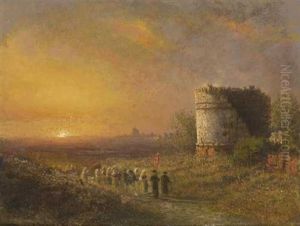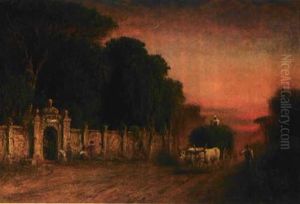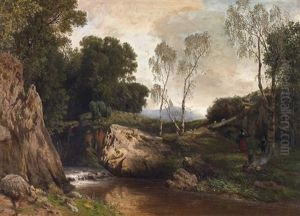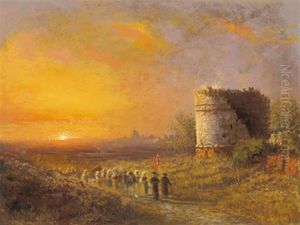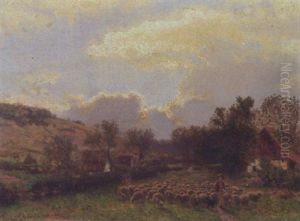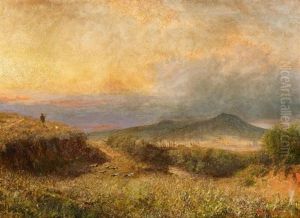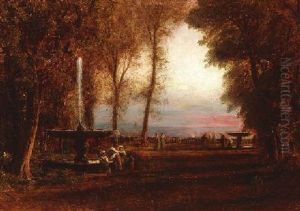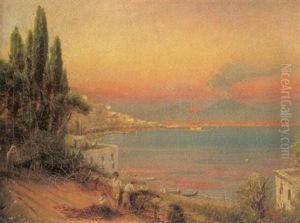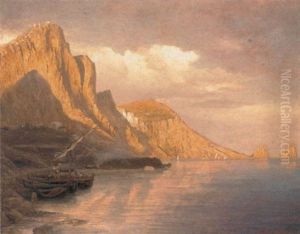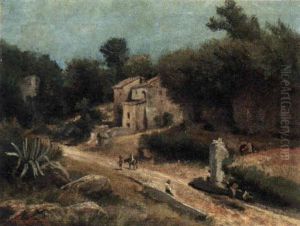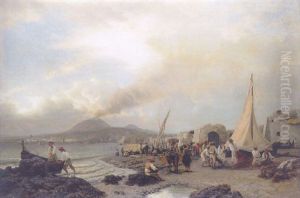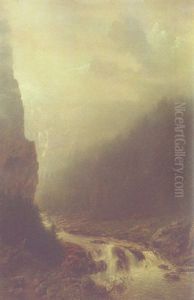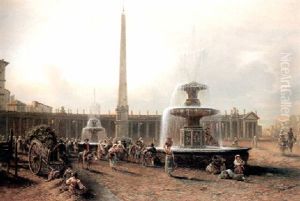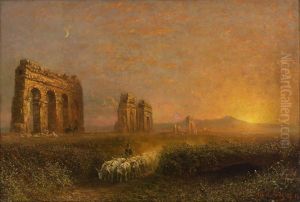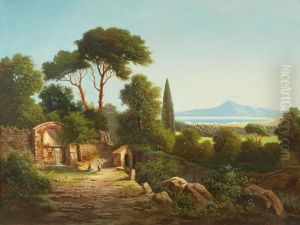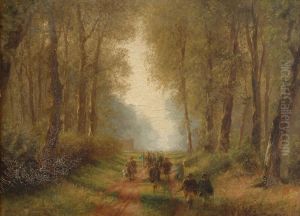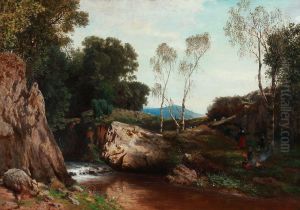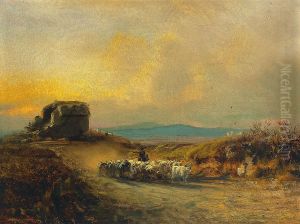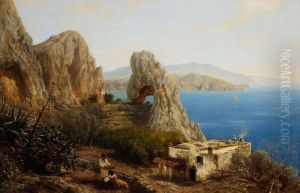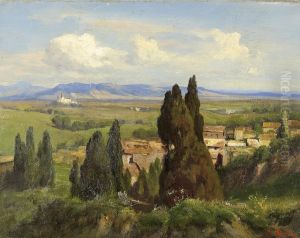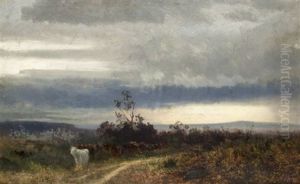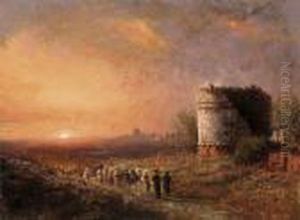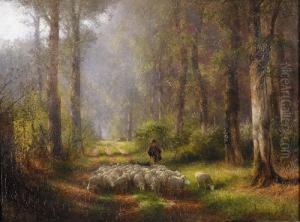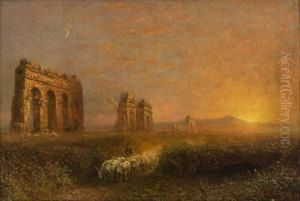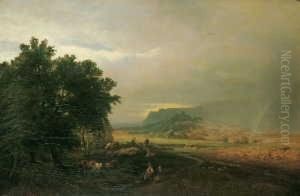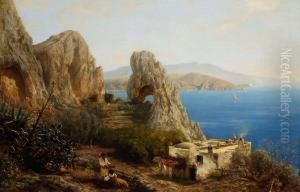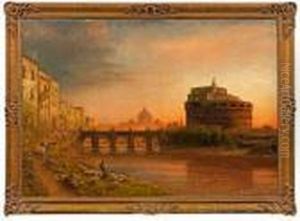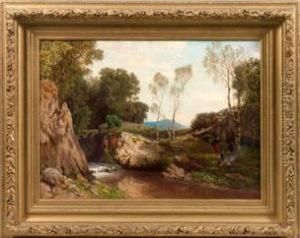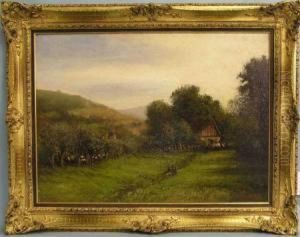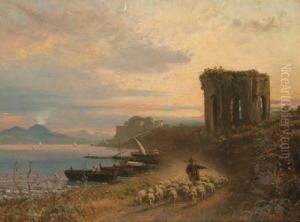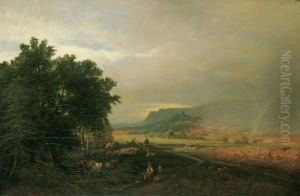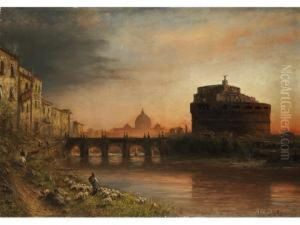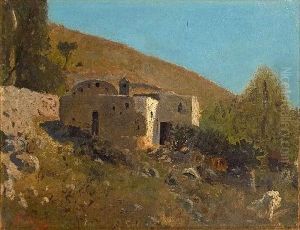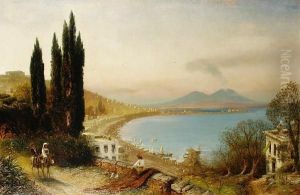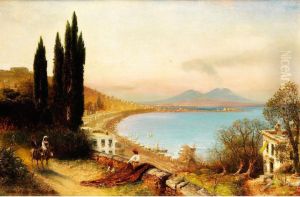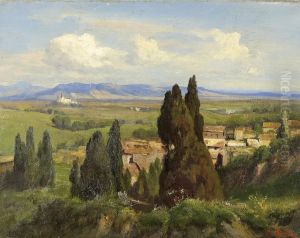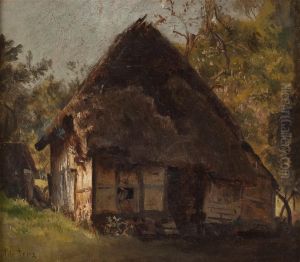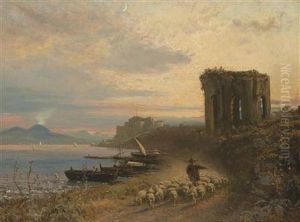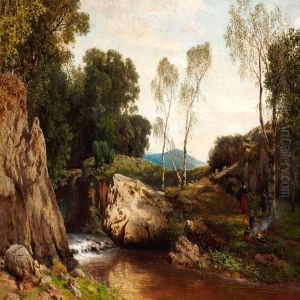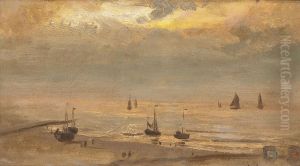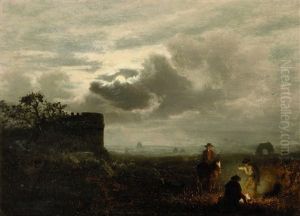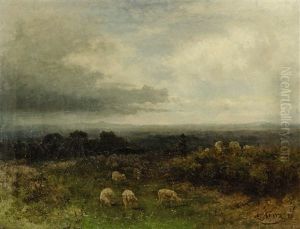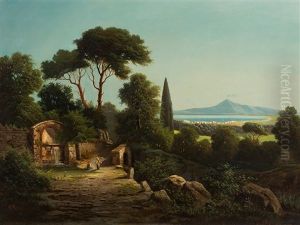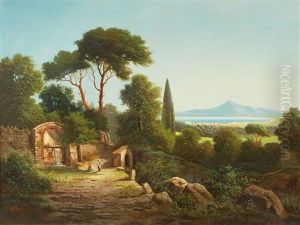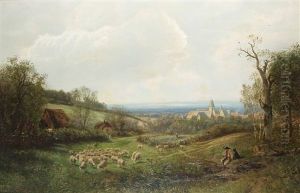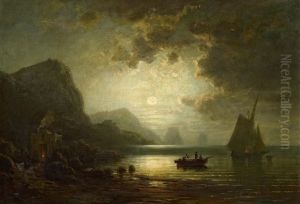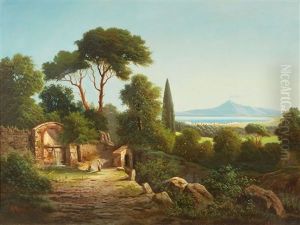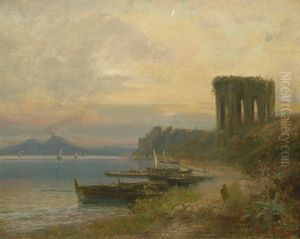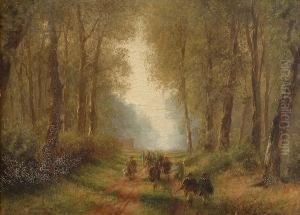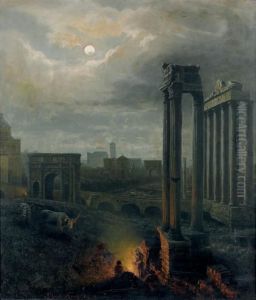Albert Arnz Paintings
Albert Arnz was a 19th-century German landscape painter who is less known in the mainstream art history. Born in Düsseldorf, Germany, in 1832, he was part of the Düsseldorf school of painting, which was a group of painters who studied at the Düsseldorf Academy of Arts in the mid-19th century. This school was known for its emphasis on detail, careful composition, and a romanticized approach to landscape painting.
Arnz received his artistic training at the Düsseldorf Academy, which was one of the leading art schools in Europe at the time. The Academy was famous for its rigorous curriculum and the quality of its instructors, who emphasized the traditional principles of painting. During his time at the Academy, Arnz honed his skills in landscape painting, a genre that was becoming increasingly popular among the middle and upper classes of Europe.
After completing his studies, Albert Arnz focused on capturing the picturesque landscapes of Germany and other parts of Europe. His works often featured the rural countryside, with attention to the changing seasons and the varying moods of nature. Arnz's paintings were characterized by their detailed realism and the use of light to create atmospheric effects.
Throughout his career, Arnz exhibited his work in various galleries and gained a certain level of recognition and success. However, he did not achieve the same fame as some of his contemporaries from the Düsseldorf school, such as Andreas Achenbach or Oswald Achenbach, who were well-known for their dramatic and emotive landscapes.
Albert Arnz continued to paint throughout his life, contributing to the tradition of German landscape painting well into the early 20th century. He passed away in 1914, leaving behind a body of work that, while not widely known today, represents an important part of the Düsseldorf school's contribution to art history. His paintings remain of interest to collectors and historians who specialize in 19th-century European art.
